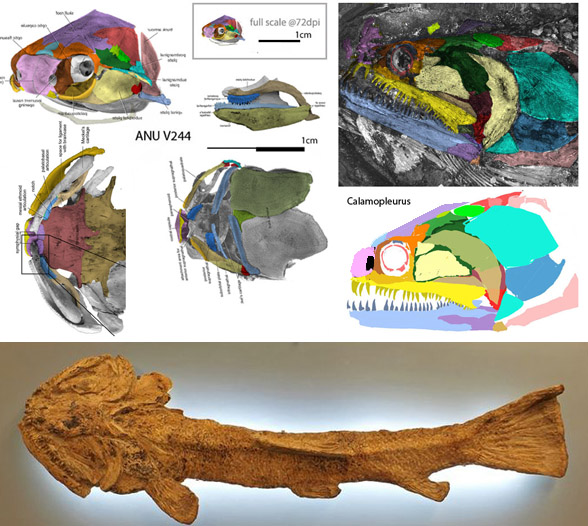More work needs to be done on the LRT,
but this current pairing of time-separated extinct fish seemed worth sharing.
Not the origin of the preopercular (Fig 1, light yellow) in this clade from a larger cheek cover in tiny toothless and unnamed ANU V244 from the Early Devonian that breaks into three parts in larger toothier Calamopleurus from the Early Cretaceous.
At the same time, note the genesis of the jugal (cyan) splitting and expanding to form a tripartite operculum in just a few hundred million years.

References
Agassiz L 1833-43. Recherches sur les poissons fossiles. Imprimerie de Petitpierre et Prince, Neuchâtel.
